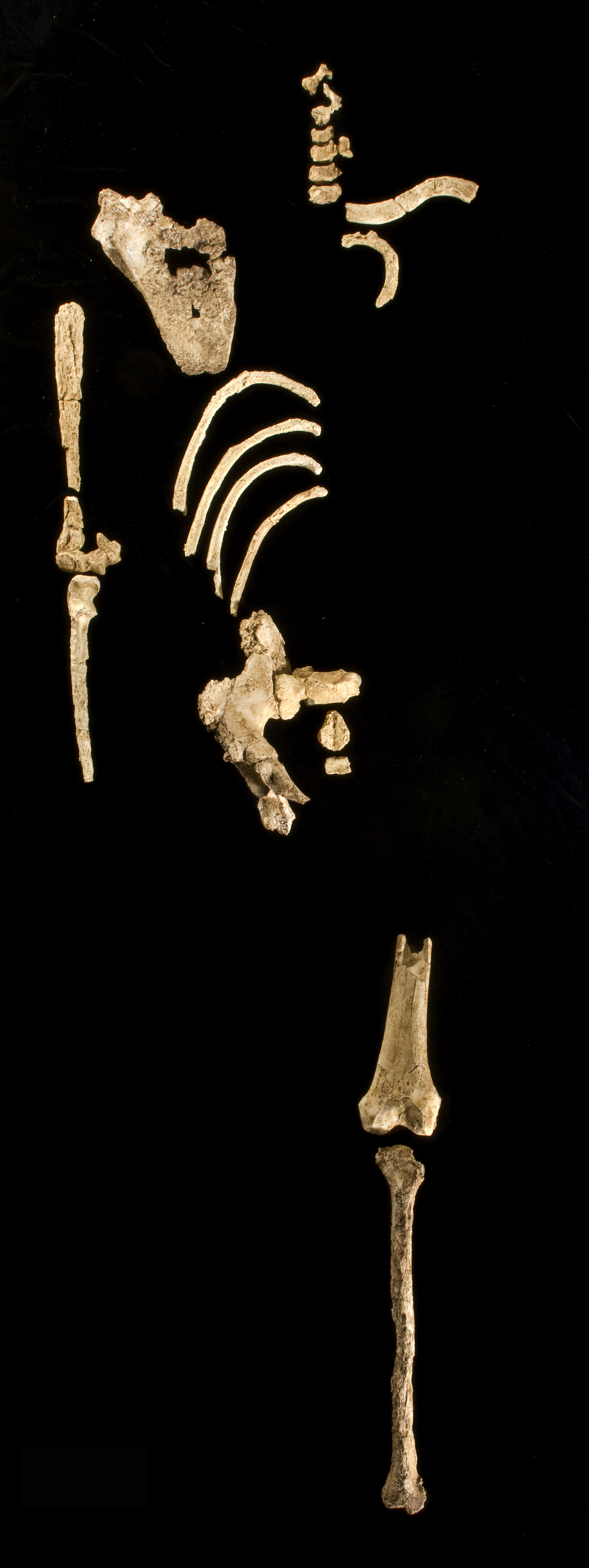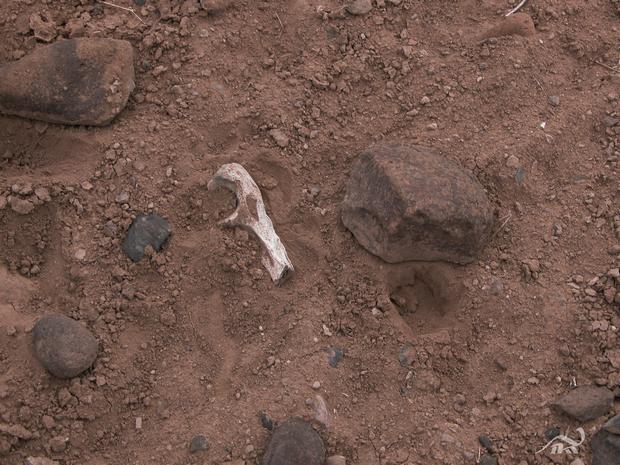Meet Lucy's 'great-grandfather'. Scientists from The Cleveland Museum of Natural History, Kent State University, Case Western Reserve University, Addis Ababa University and Berkeley Geochronology Center were part of an international team that discovered and analyzed a 3.6 million-year-old partial skeleton found in Ethiopia. They say the early hominid is 400,000 years older than the famous Lucy skeleton and that their research on this new specimen indicates that advanced human-like, upright walking occurred much earlier than previously thought.
The partial skeleton belongs to Lucy's species, Australopithecus afarensis. It was found in the Woranso-Mille area of Ethiopia's Afar region by a team led by first author Dr. Yohannes Haile-Selassie, Curator and Head of physical anthropology at The Cleveland Museum of Natural History. The partial skeleton was excavated over five years after the discovery of a fragment of the lower arm bone in 2005. The excavation recovered the most complete clavicle and one of the most complete shoulder blades ever found in the human fossil record.
The specimen was nicknamed Kadanuumuu (kah-dah-nuu-muu) by the authors. Kadanuumuu means big man in the Afar language and reflects its large size. The male hominid stood between 5 to 5 1/2 feet tall, while Lucy stood at about 3 1/2 feet.

Kadanuumuu. Credit: Yohannes Haile-Selassie, Liz Russell, Cleveland Museum of Natural History. Used with permission from the Proceedings of the National Academy of Sciences.
This individual was fully bipedal and had the ability to walk almost like modern humans, said Haile-Selassie. As a result of this discovery, we can now confidently say that 'Lucy' and her relatives were almost as proficient as we are walking on two legs, and that the elongation of our legs came earlier in our evolution than previously thought.

The first element of the partial skeleton (KSD-VP-1/1) that was found on February 10, 2005 by Alemayehu Asfaw. It is a profimal half of the ulna, one of the bones of the lower arm. Photo courtesy: Yohannes Haile-Selassie, Cleveland Museum of Natural History
Co-author Dr. C. Owen Lovejoy, Kent State University professor of anthropology, explained, The new specimen tells us much more about the pelvis, thorax, and limb proportions than 'Lucy' was able to alone.
Authors of the research include Dr. Bruce Latimer, director of the Center for Human Origins at Case Western Reserve University; and Dr. Beverly Saylor, associate professor of geological sciences at Case Western Reserve University.
The discovery and results from this initial analysis will be published later this week in the online early edition of the Proceedings of the National Academy of Sciences.






Comments